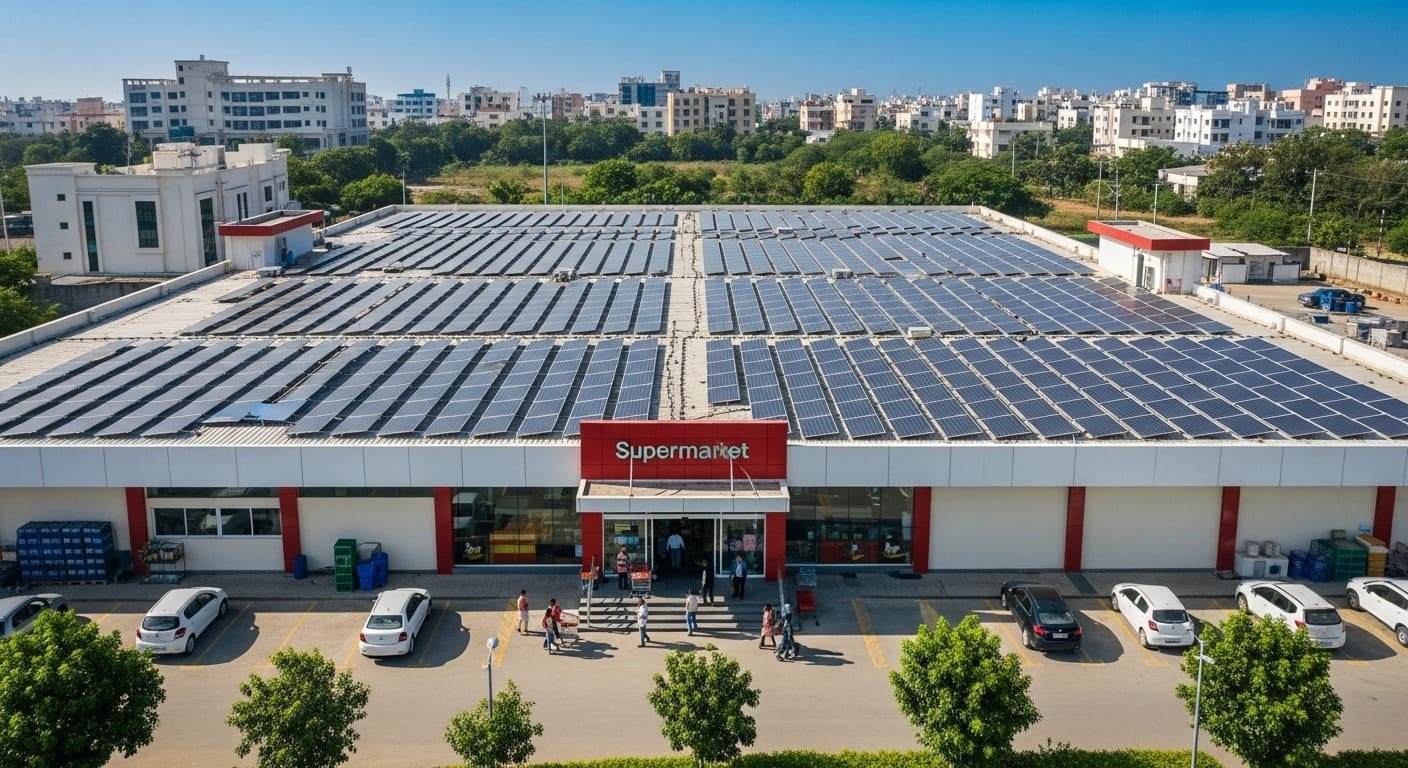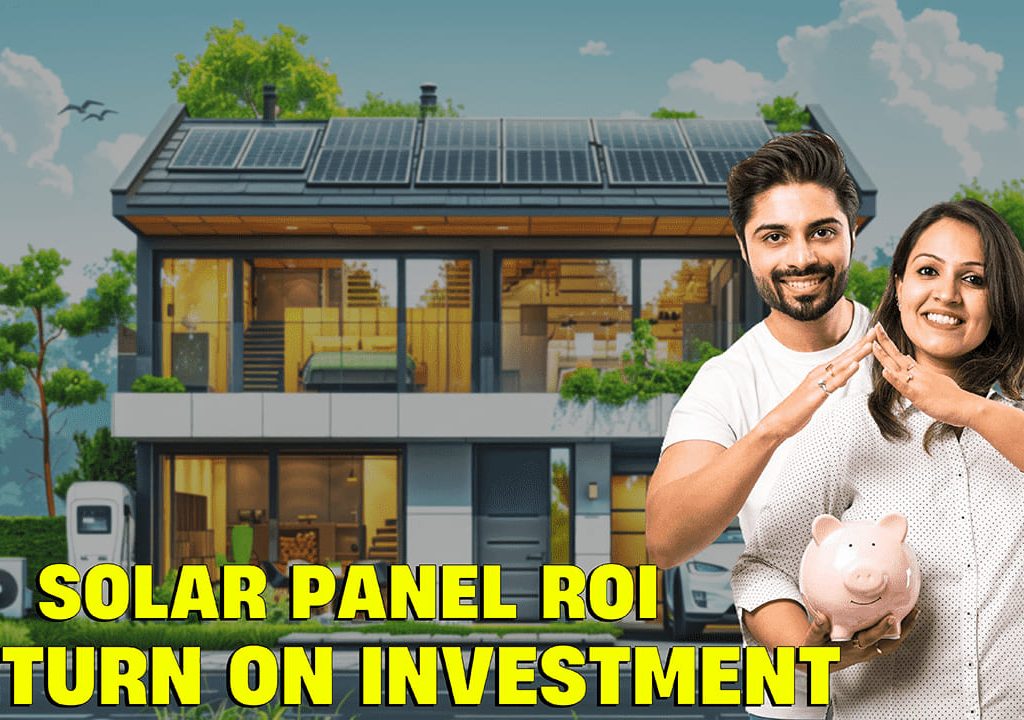
How Small Businesses Can Save Big with Rooftop Solar
In 2025, electricity costs for small businesses in India are climbing faster than ever, directly impacting profit margins. Rooftop solar offers a practical way to cut these costs—often slashing monthly power bills by 50–80%—while protecting against unpredictable tariff hikes.
Beyond immediate savings, solar delivers a reliable long-term return on investment, with most systems paying for themselves in 3–5 years and continuing to generate free power for decades. For businesses where every rupee counts, this isn’t just an energy choice—it’s a competitive advantage. Here’s how small businesses can turn unused roof space into a powerful cost-saving asset and secure their energy future.
Why Electricity Costs Hurt Small Businesses
For small businesses in India, electricity is a major operating expense. Retail shops rely on lighting, fans, and air-conditioning for long hours. Small factories run machinery that consumes constant power. Cold storage units require uninterrupted refrigeration, and offices depend on computers, printers, and lighting throughout the day. Rising electricity tariffs directly increase these costs. For example, a 15% hike in rates can add thousands of rupees to a shop’s monthly bill or lakhs annually for a small manufacturing unit. Unlike larger companies, small businesses have less bargaining power and tighter margins, so higher energy costs eat directly into profits. Over time, these expenses limit reinvestment, expansion, and competitiveness, making energy cost control a critical priority.
How Rooftop Solar Cuts Power Costs
Rooftop solar reduces electricity costs by generating power directly from your own premises, offsetting the need to draw expensive units from the grid. For a small business, this means fewer units purchased from the DISCOM each month, lowering the bill significantly.
For example, a 10 kW rooftop solar system in India can produce around 1,200–1,500 kWh per month. At an average commercial tariff of ₹8 per unit, that’s a saving of ₹9,600–₹12,000 monthly—or over ₹1 lakh per year. In states with net metering, any excess solar power can be exported to the grid, earning credits or payments that further reduce costs.
By generating clean power on-site, businesses also reduce their exposure to future tariff hikes. The more energy you produce and consume from your rooftop system, the less dependent you are on fluctuating electricity prices, making solar a reliable long-term cost control tool.
Real-World ROI for Small Businesses
Calculating ROI for rooftop solar is straightforward when you look at installation cost, monthly savings, and payback period. In India, a commercial rooftop solar system typically costs ₹45,000–₹55,000 per kW (including panels, inverter, and installation).
A 10 kW system would therefore cost about ₹4.5–₹5.5 lakh. Such a system can generate roughly 1,200–1,500 kWh per month. At an average tariff of ₹8 per unit, that’s ₹9,600–₹12,000 in monthly savings. Over a year, savings can reach ₹1.15–₹1.4 lakh. This means most businesses recover their investment in 4–5 years, after which the electricity generated is essentially free for the remaining 15–20 years of the system’s life.
Factoring in net metering benefits and protection from rising tariffs, the ROI becomes even stronger. By running these numbers with actual tariffs and usage, small businesses can make an informed decision backed by clear financial logic.
Overcoming Common Concerns Regarding Solar Installations
Many small business owners hesitate to install rooftop solar because of a few common concerns.
1. “The upfront cost is too high.”
Solution: Government subsidies, easy financing, and loans make solar more affordable. In most cases, monthly savings match or exceed EMI payments, so your cash flow remains unaffected. Additionally, accelerated depreciation benefits for businesses, low-interest loans, and easy EMI options make the transition affordable without straining cash flow
2. “My roof might not be big enough.”
A 10 kW rooftop solar system typically needs about 1,000 sq. ft., including walkways and spacing for safe access. In practice, even a medium-sized 2,000 sq. ft. shop roof can easily accommodate this capacity. Installation is also highly flexible—panels can be mounted on RCC roofs, metal sheds, or elevated structures—so irregular roof shapes or existing installations rarely prevent a successful setup.
Also, High-efficiency mono PERC, TOPCon and bifacial solar panels generate more power per square foot, allowing even small rooftops to produce significant energy. Customized mounting structures and optimised panel layouts ensure maximum generation from available space.
3. “Solar needs too much maintenance.”
Solution: A well-installed rooftop solar system needs very little upkeep. The only major component that might need servicing is the battery. With modern lithium batteries, there’s zero water topping or servicing needed—they run maintenance-free for years. And if you choose an on-grid battery-less setup, there’s no battery at all, which means almost no maintenance beyond basic panel cleaning.
4. “It won’t work well in cloudy weather.”.”
Solution: Some business owners worry that solar won’t work well in cloudy weather, but modern panels are designed to generate power even without direct sunlight. In fact, they still produce about 10–25% of their peak output on overcast days thanks to diffuse sunlight. Annual generation estimates—such as 1,200–1,500 kWh per month for a 10 kW system—already account for seasonal changes, including monsoon months. Most regions in India enjoy 300+ sunny days a year, ensuring that solar remains a highly reliable and consistent source of power for the vast majority of the year.
Steps to Get Started with Solar for Business
- Check your electricity bills to know your monthly consumption.
- Consult a solar provider for a site survey.
- Review a customised proposal with costs, savings, and ROI.
- Arrange financing or apply for subsidy if eligible.
- Install and activate the system to start saving immediately.
Final Thoughts
Rooftop solar panels can lock in predictable and low cost power for decades, especially for shops, showrooms, offices, and other small businesses. With payback periods of 4–5 years and minimal maintenance, solar offers one of the most reliable investments you can make in 2025. By cutting your dependence on the grid, you protect your business from rising tariffs and improve long-term profitability. The sooner you act, the sooner you start saving — and every month delayed is money left on the table. Contact us today for a free rooftop site assessment and see exactly how much your business could save.




